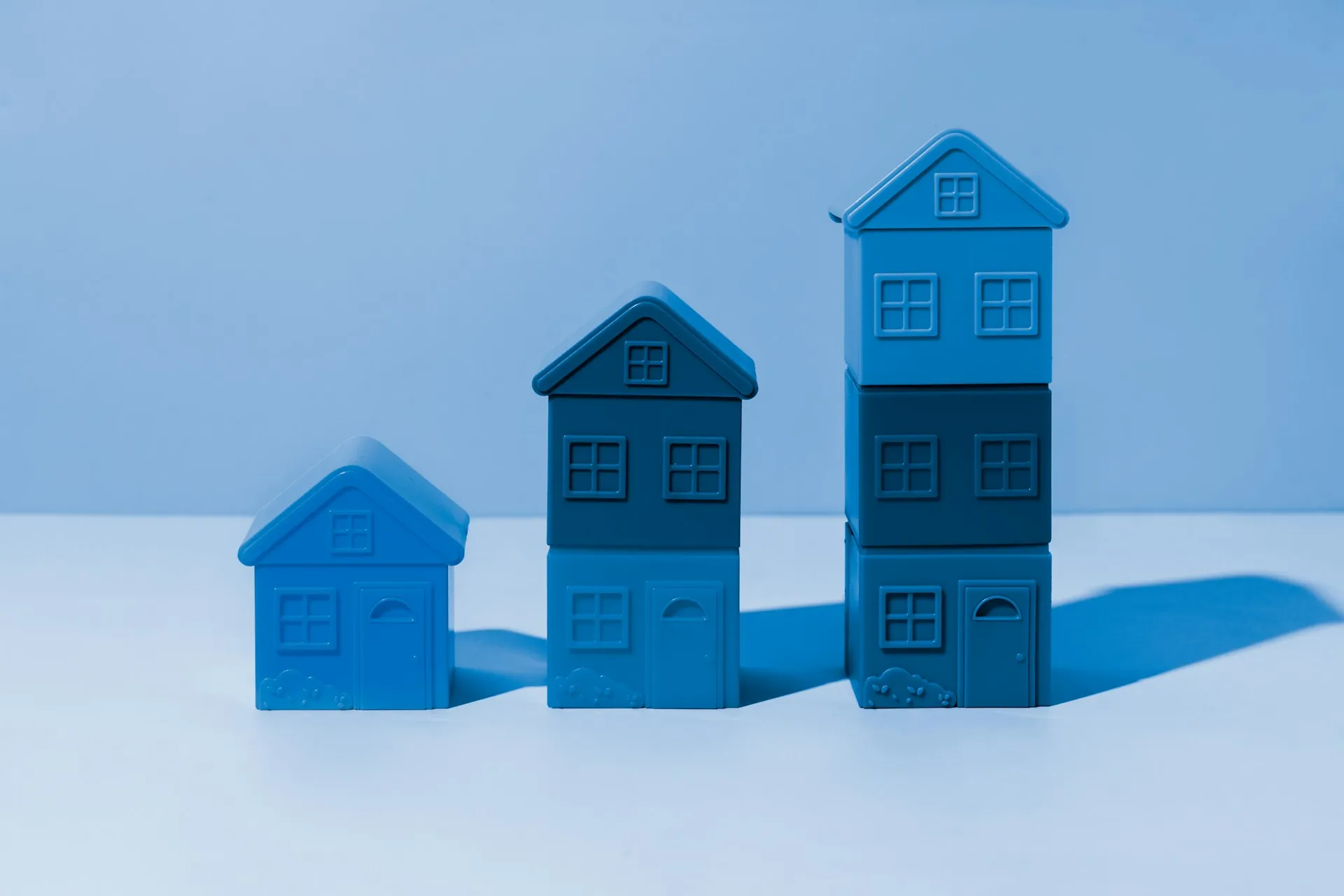Mehr Wohnraum oder besserer Wohnraum?

Entdecken Sie Erkenntnisse über mehr Wohnraum und besseren Wohnraum und deren Bedeutung im heutigen dynamischen Geschäftsumfeld.
In Mexiko konzentriert sich die Diskussion über die Wohnraumproduktion in der Regel auf quantitative Aspekte, wie die Anzahl der Häuser, die eine Regierung während ihrer Amtszeit bauen will. Die Frage der Wohnqualität wird jedoch selten angesprochen, ein entscheidender Aspekt, um ihr Potenzial als Entwicklungsplattform zu nutzen.
Ein aktuelles Beispiel ist die Ankündigung der Bundesregierung, die ihre Absicht erklärte, innerhalb dieser sechsjährigen Amtszeit eine Million Häuser zu bauen. Es wurde jedoch beispielsweise nicht detailliert beschrieben, wo sie sich befinden werden oder welche qualitativen Merkmale sie haben werden.
In diesem Zusammenhang wurden in den letzten Jahrzehnten in Mexiko Millionen von Häusern gebaut. Viele von ihnen sind jedoch von schlechter Qualität: minimale Wohnfläche, Materialien mit geringer Haltbarkeit, abgelegene Lage von Arbeitsplätzen und Dienstleistungen usw. Teilweise aus diesem Grund gibt es mehr als 6 Millionen leerstehende Häuser, von denen viele verlassen sind.
Daher besteht die Notwendigkeit, mehr Wohnraum zu produzieren, aber vor allem besseren Wohnraum. Dazu ist es unerlässlich, von einer rein architektonischen Sichtweise des Wohnens zu einer umfassenderen Sichtweise überzugehen, die Wohnen als Plattform für den Zugang zu besseren Möglichkeiten begreift. In diesem Sinne ist Qualität ein fundamentaler Faktor.
Aber wie beeinflusst Wohnen die Entwicklung der Menschen? Was sagt die internationale Evidenz?
Verbesserte Gesundheitsbedingungen
In Mexiko hat der Ersatz von Lehmböden durch Beton in Häusern parasitäre Befälle um 78 %, Durchfallerkrankungen um 49 % und die Anämie-Prävalenz um 81 % reduziert (Cattaneo et al., 2007). Dies unterstreicht die Bedeutung der Qualität der Baumaterialien.
Der Zugang zu grundlegenden Dienstleistungen ist ebenfalls essentiell für die Gesundheit. Beispielsweise wird in Indien geschätzt, dass die Prävalenz von Durchfall bei Kindern unter fünf Jahren in Haushalten ohne direkten Anschluss an Trinkwasser um 21 % höher ist (Jalan et al., 2001).
Darüber hinaus hängt Überbelegung mit einem höheren Risiko der Krankheitsübertragung zusammen, da die Verringerung der Wohnfläche die körperliche Nähe zwischen den Bewohnern erhöht und die Belüftung einschränkt. In São Paulo, Brasilien, wurde Überbelegung mit einer 2,5-fachen Zunahme der Inzidenz von Infektionen der Atemwege in Verbindung gebracht (Cardoso et al., 2004). Eine Erweiterung der Wohnfläche kann dazu beitragen, dieses Problem zu mindern.
Der Zugang zu grundlegenden Dienstleistungen ist mit den schulischen Leistungen von Kindern und Jugendlichen verbunden. In Bangladesch ergab eine Studie (Khandker et al., 2009), dass die Installation von Photovoltaikanlagen in Haushalten in Gemeinden ohne Zugang zu Elektrizität die Studienzeit junger Menschen verlängerte und ihre schulischen Leistungen verbesserte.
Andererseits kann Überbelegung die Lernfähigkeit beeinträchtigen, aufgrund von übermäßigem Lärm und mangelnder Privatsphäre, Faktoren, die die Konzentration beeinträchtigen. In einigen Gemeinden in Frankreich wird geschätzt, dass 59 % der Jugendlichen, die in Häusern mit mehr als einer Person pro Zimmer leben, Verzögerungen in ihren Schulleistungen erfahren (Goux et al., 2005), was darauf hindeutet, dass die Größe der Häuser die schulischen Leistungen beeinflussen kann.
Besserer Zugang zu Arbeitsplätzen
Der Zugang zu Dienstleistungen wie Elektrizität kann den Zugang zu Arbeitsplätzen erleichtern, insbesondere in Haushalten in Armut. Beispielsweise haben Elektrifizierungsprojekte in Nicaragua die Wahrscheinlichkeit, dass Frauen außerhalb des Hauses arbeiten, um 23 % erhöht (Grogan et al., 2013).
In Indien hat der Zugang zu Elektrizität im Haushalt das monatliche Einkommen der ärmsten Haushalte um 17 % erhöht. Dies liegt daran, dass Elektrizität es den Menschen ermöglicht, mehr Zeit für produktive Aktivitäten aufzuwenden (Samad et al., 2016).
Geringere Transportkosten
Die Lage der Häuser beeinflusst die monatlichen Ausgaben eines Haushalts. Beispielsweise erhöht das Wohnen weit entfernt von Gebieten mit einer höheren Konzentration von Arbeitsplätzen und Dienstleistungen die Reisedistanzen und -zeiten, was wiederum die Transportkosten erhöht.
Eine Studie (Libertun, 2018) zeigt, dass in Puebla die monatlichen Transportkosten eines Haushalts am Rande 34 % seiner Gesamtausgaben ausmachen, während ein Haushalt in einem zentraleren Gebiet etwa 16 % ausgibt. Dies kann die Ausgaben eines Haushalts in anderen Bereichen wie Bildung und Gesundheit einschränken. Aus diesem Grund ist die Lage des Hauses ein fundamentaler Faktor.
Mehr Wohnraum oder besserer Wohnraum?
In Mexiko wird geschätzt, dass ein quantitativer Mangel von 591.000 Wohnungen besteht, was der Anzahl der Einheiten entspricht, die benötigt werden, um die aktuelle Nachfrage zu decken. Darüber hinaus wird geschätzt, dass im Durchschnitt jährlich etwa 22.000 Wohnungen benötigt werden, um die zusätzliche Nachfrage bis zum Jahr 2050 zu decken.
Andererseits beläuft sich der qualitative Mangel auf 8,9 Millionen Wohnungen, was Mängel in Bezug auf Materialien, Zugang zu Dienstleistungen und Wohnfläche in bestehenden Wohnungen widerspiegelt (Conavi, 2022). Um daher den Wohnungsbedarf der Bevölkerung zu decken und das Potenzial von Wohnen als Entwicklungsplattform zu nutzen, ist es nicht nur wichtig, mehr Wohnungen zu bauen, sondern auch bessere Wohnungen.






